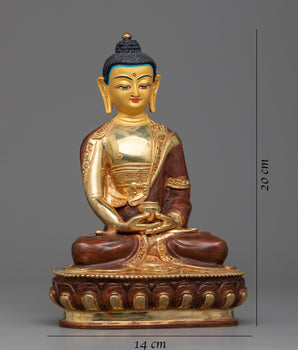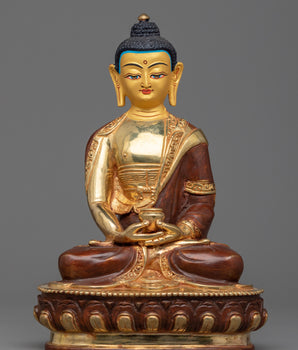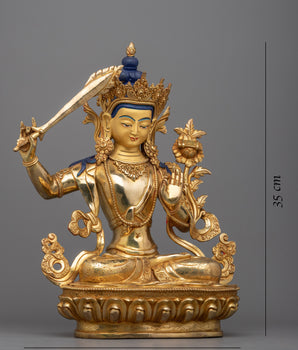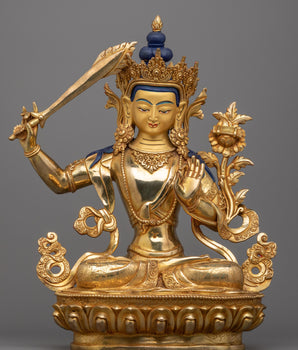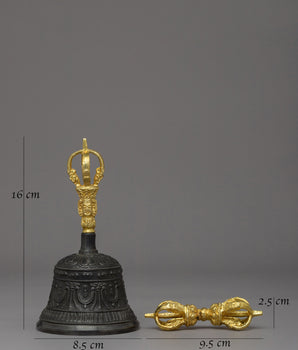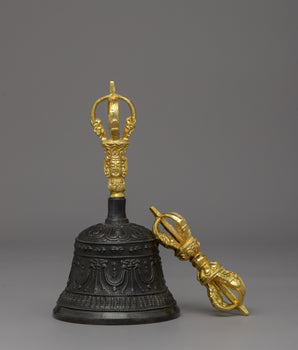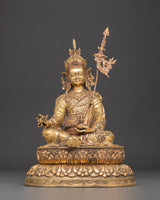
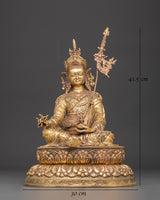
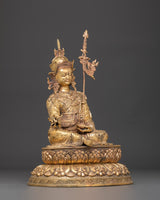
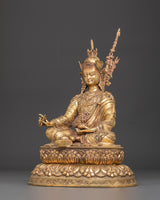
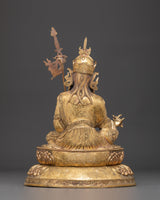
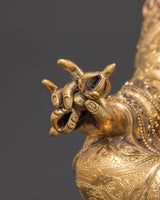
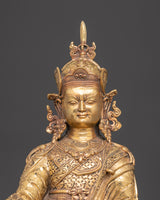
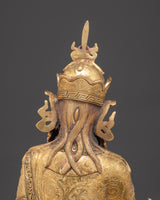
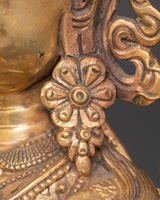
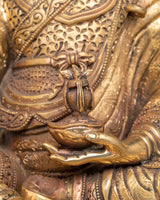
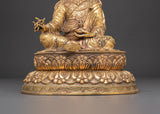
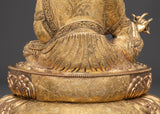
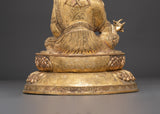
Tibetan Guru Rinpoche sculpture | Enlightened Master Art

100% AUTHENTIC

HANDMADE

FREE SHIPPING
Tibetan Guru Rinpoche sculpture for Altar | Traditional Buddhist Statue
---------------------------------------------
Size: 41.5cm(Height) x 30cm(Width)
Weight: 6.25kg
Material: Copper, Gold Plated
-----------------------------------------------
About Our Statue :
This Tibetan Guru Rinpoche Sculpture is a magnificent work of spiritual beauty, made of copper and lavishly plated with gold. Standing 41.5cm tall and 30cm wide, weighing 6.25kg, this precious object has both physical presence and deep symbolic value. Guru Rinpoche, also known as Padmasambhava, is considered as the Second Buddha and is revered throughout the Himalayas for introducing and developing Vajrayana Buddhism in Tibet. His statues are frequently put in shrines and meditation areas to invoke protection, guidance, and blessings.
Guru Rinpoche is seen in this sculpture wearing his trademark lotus hat, which represents his ultimate wisdom and ability to overcome challenges. He holds a vajra in one hand, representing indestructible insight, and a skull cup of knowledge nectar in the other, symbolizing the transformation of ignorance into enlightenment. The khatvanga stick rests against his arm, representing the confluence of wisdom and compassion. Each detail of this Padmasambhava statue has been meticulously crafted, following traditional Tibetan iconography while exuding spiritual strength and compassion.
The golden finish improves the piece's holiness by reflecting Dharma's light as well as the attributes of clarity, abundance, and protection. Guru Rinpoche is respected not only as a teacher, but also as a defender who overcomes bad forces and removes impediments to the spiritual path. Displaying this Guru Rinpoche sculpture in a meditation room or altar place is thought to invoke his blessings of prosperity, guidance, and internal development.
Introduction To Guru Rinpoche :
Guru Rinpoche was an instrumental figure in Tibetan Buddhism. In Tibetan Buddhism, Padmasambhava's teachings are said to have an oral lineage (kama) and a lineage of the hidden treasure texts (termas). He is said to appear in visionary encounters to tertöns, and his form is visualized during guru yoga practice, particularly in the Nyingma school. He is revered by Buddhists in Tibet, Nepal, Bhutan, India's Himalayan states, and other countries worldwide.
How do you take care of your statues?
• Place them at room temperature, avoiding direct sunlight.
• Make sure that the area where your statue is placed is utterly free of moisture and dust.
• Place it at the highest place on your altar after being consecrated by a Lama/monks. The best practice is to keep them covered inside a glass cabinet.
• Do not use your bare hands or any objects with a rough surface to wipe the face. Directly touching objects with the bare hand can smudge the face, leaving scratches.


















